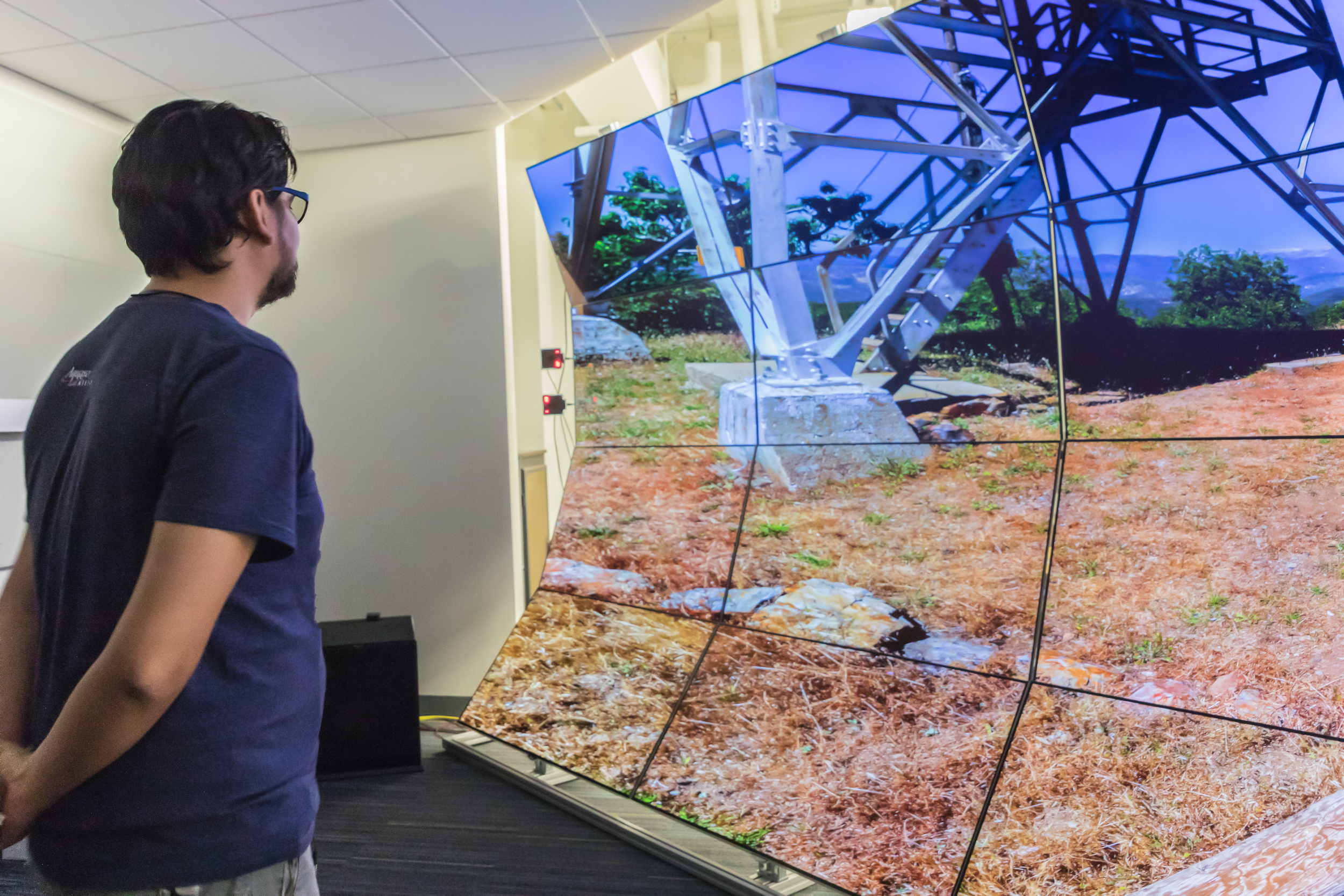The Wide Area Visualization Environment (WAVE)
The Wide Area Visualization Environment (WAVE) is a powerful, new kind of instrument enabling researchers to discover new insights into their research and communicate about their work in new and exciting ways. The WAVE is among the largest walk-in visualization environments in the world, and it's more than just rendering and display. The system's core is an 11-server cluster hosting 21 high-end Graphics Processor Units (GPUs), typically used in advanced media and gaming.
The WAVE comprises 20 4K (Ultra HD), stereoscopic Organic Light Emitting Diode (OLED) displays tiled together in a 5 x 4 half-pipe matrix. These OLED displays can display over 1 billion distinct colors (compared to standard displays of around 1.7 million) and a contrast ratio of 200,000:1. In addition to the stunning 2D/3D imagery. The system is connected to the ScienceDMZ at 10Gbps, so multi-site collaborations are possible. While each individual part of the WAVE (e.g., the displays, the GPUs, the network) is commodity hardware, the sophisticated engineering and open-source software it runs make the WAVE, and its kin a unique research tool.
The WAVE allows for a rich set of interactions, supporting almost all types of game controllers and user inputs. It includes the ability to track multiple peoples' interactions while using the WAVE, so it is suitable for user interaction studies, research into perception, and game-level design.
Kubernetes (K8s) is an open-source system for automating the deployment, scaling, and management of containerized applications. We use K8s to deploy visualization software such as UC San Diego's CalVR for viewing massive point clouds and 360° stereoscopic panorama photographs, as well as software deployed by the users of the Nautilus Cluster. Kubernetes allows Research Computing to deploy the latest scientific software packages as part of the Nautilus Cluster.
WAVE lab tours are not currently available due to COVID-19.
The WAVE Lab
Research Computing also runs the WAVE Lab. Researchers can get targeted help developing visualizations, learning common visualization and media tools, borrowing equipment, and previewing their work on smaller-scale display systems (and the WAVE itself).
We recognize that content doesn't create itself. People need tools, expertise, and a place to experiment. The WAVE Lab lowers the barriers for researchers in the content creation pipeline, from capture to rendering and display. The WAVE and the WAVE Lab are part of the Facility on Research Computing. Anyone can propose a project to request access to the WAVE and the WAVE Lab to the WAVE Steering committee for their research.
To learn how you can use the WAVE and the WAVE Lab in your work, please request a Research General Request/Consultation.





